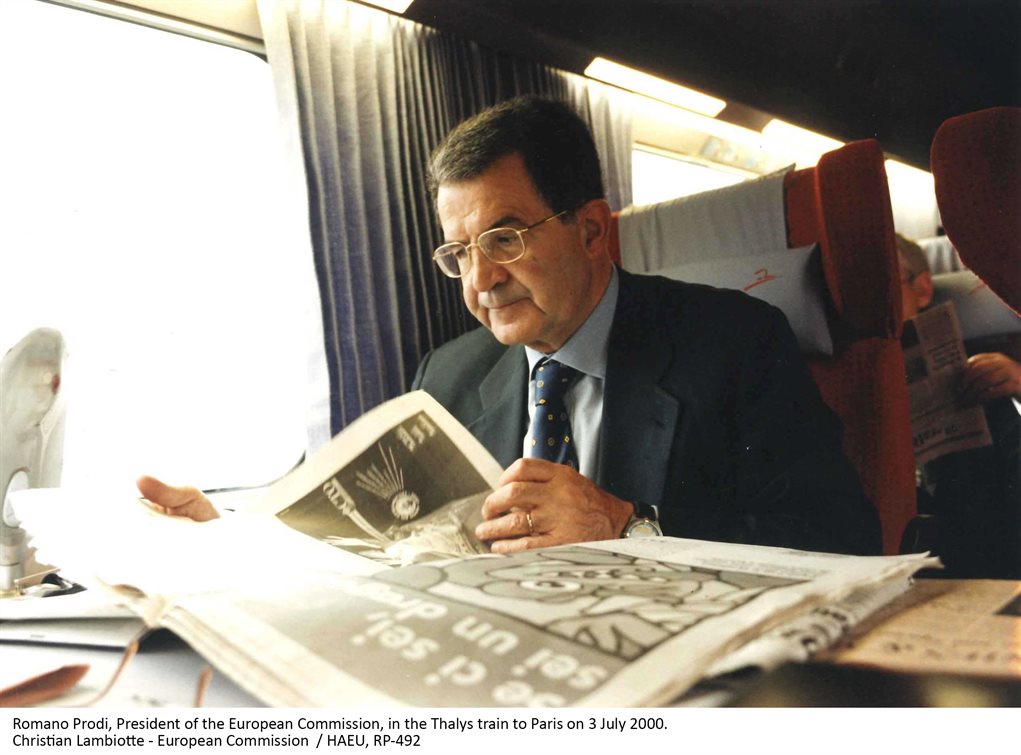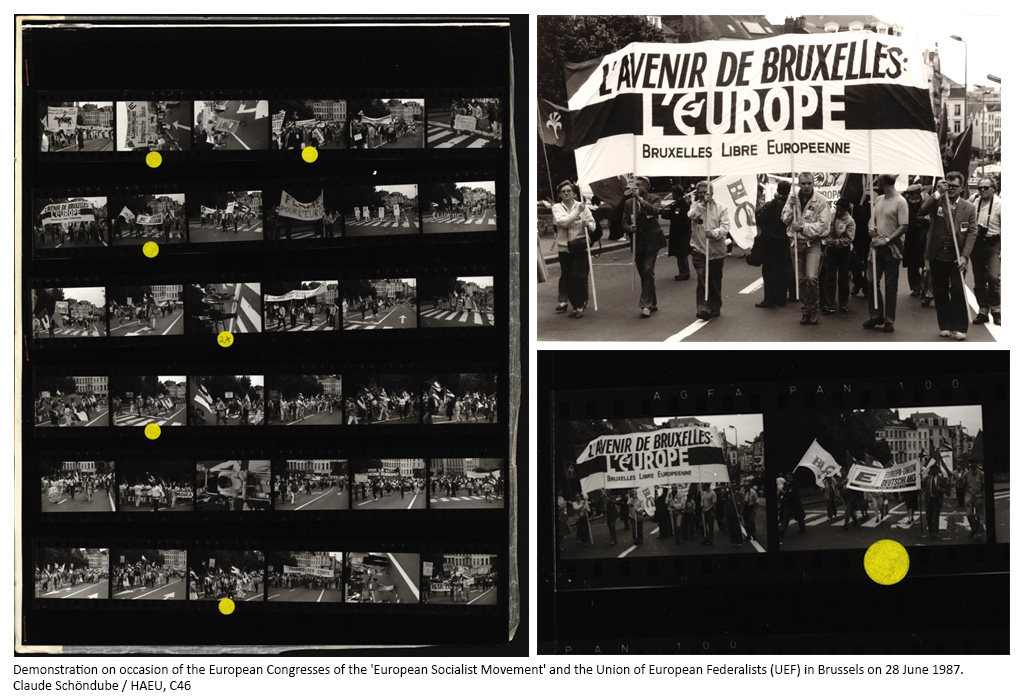Posted on 27 October 2017
In light of UNESCO World Day for Audiovisual Heritage, the Historical Archives of the European Union would like to share how we contribute to safeguarding the audio-visual heritage of the history of the European Union.
In a society marked by a growing demand and greater consumption of multimedia documentation, audiovisual collections are crucial for the information and research services of the Archives. The Archives are, therefore, constantly improving their research and access tools to cope with new technological developments and the right and needs of citizens to access this material. A bold digitization project has been launched by our archives to further enhance dissemination and guarantee the durability of this fragile material – a VHS format cannot be recovered in 80 years because its life expectancy, even under archival preservation conditions, is hardly more than 20 years. Also, the HAEU invests in maintaining equipment capable of reproducing media formats that are no longer in use.
On 2017's World Day for Audiovisual Heritage, we commit ourselves to continue improving our services, skills and infrastructure to guarantee the preservation and access to these audiovisual collections that form a key part of the history of the European Union.
The audiovisual heritage preserved at the Historical Archives of the European Union in Florence is of fundamental value for European citizens. Audio-visual material allows us to interrogate the history of European integration, not just to complement textual documents, but as a historical source of its own. Since the 19th century, audiovisual documents have been a means of communication for a broad range of human activities, such as science, art, journalism, industry and leisure. The information contained in images, videos and sounds can provide more pluralistic interpretations than written documents.

The more than 27,700 photographs managed by the Archives trace the forming of the European Union through portraits of personalities, conferences, meetings, premises, institutional visits around the world, and a plethora of educational and scientific projects throughout Europe. The personal archives look beyond the activities of European institutions and allow for an insight into the motivations for a united Europe. The example of Italian partisan and politician Enzo Enriques Agnoletti provides images stretching from the bombing and the capture of Florence during the Second World War to commemorations of the Italian resistance in the 1960s. Also striking is the use of graphics in political campaigning, shown in a poster collection of the European Parliament, the Jeunes Européens Fédéralistes (JEF), the Movimento Federalista Europeo (MFE) and other bodies referring to the election campaigns for the European Parliament.
More than 7,500 audio recordings are also available including 600 interviews of high-ranking EU officials and European personalities who played leading roles in European integration. Video recordings, in the form of documentaries, advertisement and interviews document a variety of institutional conferences, event, and other EU activities.

The audio-visual collections are organized following the principles of provenance and original order. Hence, the collocation of the material within an archival fond allows for the contextualization of these items and provides a better understanding of the document. In the case of the rich photographic material in the papers of journalist, photographer and federalist Claus Schöndube, the photographic material can be assessed in their direct association with textual documents and in their different formats as positives, albums, negatives and contact sheets with marks for selected images.